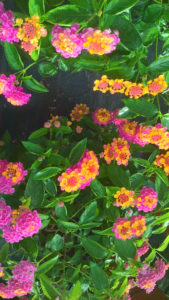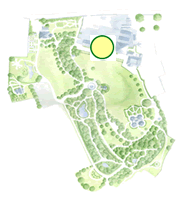Lantana camara (and various cultivars)
Plant of the month: August
 |
 |
Also known as: Big sage / tickberry
Native to: American tropics
Blooms: Summer to autumn
Habitat: Wastelands, forest edges, grasslands and beach fronts
Where is it found at BBG: Mediterranean House
This highly ornamental, small shrub grows to 2m tall and has horny stems, brightly coloured flowers and leaves that are pungent when crushed.
It belongs to the Verbena family Verbenaceae and each ‘flower’ is in fact numerous flowers joined together (inflorescence). Each flower has four petals ranging in colour from white, mauve, pink, orange, yellow and red. Highly attractive to butterflies and insects, after pollination the flowers change colour, for example yellow to red, signalling to insects that the pre-change colour has the best nectar. Once pollinated, the flowers turn into inedible green fruits, ripening to black. These are eaten by birds, which then deposit the seeds over large distances. It has been introduced to over 50 warm climate countries of the world where it has become invasive, outcompeting native flora. Being drought tolerant, it thrives in lots of sun and heat so does better in a warm glasshouse or conservatory in the UK.

